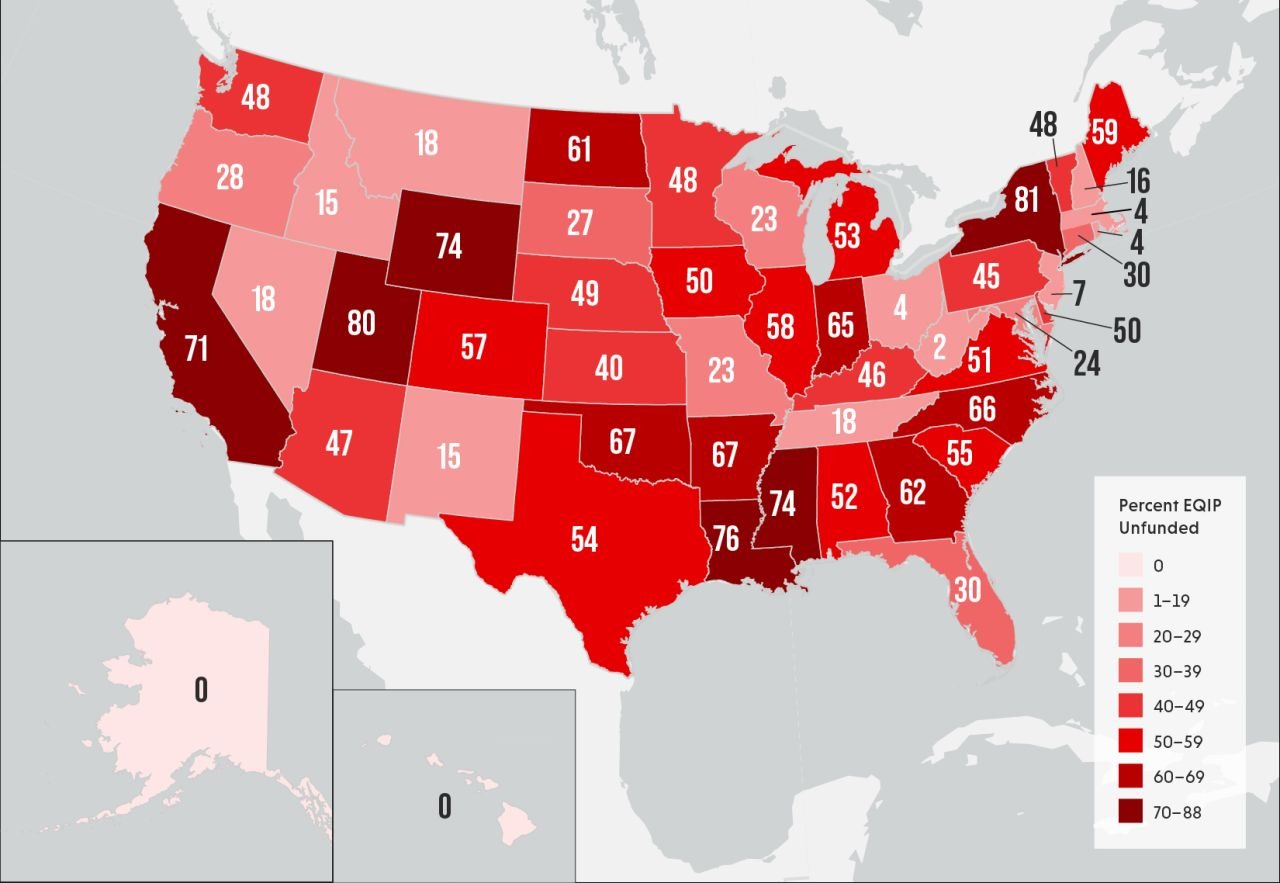
New data from the Department of Agriculture show that farmer demand for USDA farm stewardship support continues to outstrip available funds, despite $19.5 billion of additional funding for climate-smart practices set aside through the Inflation Reduction Act, or IRA.
Data released last month by the USDA shows that more than half of farmers applying for two major USDA conservation programs– the Environmental Quality Incentives Program, or EQIP, and the Conservation Stewardship Program, or CSP – are being turned away due to insufficient funding.
Sixty-two percent of farmers applying for EQIP money, including IRA funding, were turned away because not enough money had been set aside for them, according to USDA data.
Percentage of unfunded applications for FY23 EQIP Inflation Reduction Act funding

Congress provided $19.5 billion over four years to finance climate-smart farming practices in the IRA. Congress raised the level of EQIP funding by more than $8 billion and increased CSP funding by more than $3 billion.
There are many reasons record numbers of farmers are seeking USDA conservation funding now:
- Funding availability. With more available USDA conservation funding, many farmers are applying for the programs again after being rejected in the past because they were oversubscribed, studies show.
- Extreme weather. Some farmers already feel the brunt of the extreme weather caused by the climate crisis, and crop insurance payments for climate-related claims have already started to increase. Many of the USDA-funded climate-smart practices can help minimize the economic damage caused by storms.
- Agriculture’s growing greenhouse gas emissions. Nitrous oxide emissions from synthetic fertilizers and methane emissions from animals and their waste account for at least 11 percent of U.S. greenhouse gas emissions. As other sectors lower their emissions, agriculture’s share of U.S. emissions could increase to 32 percent by 2050.
But against this backdrop of overwhelming demand for USDA conservation funding, some members of Congress want to cut the climate-smart IRA funding in order to increase subsidies.


